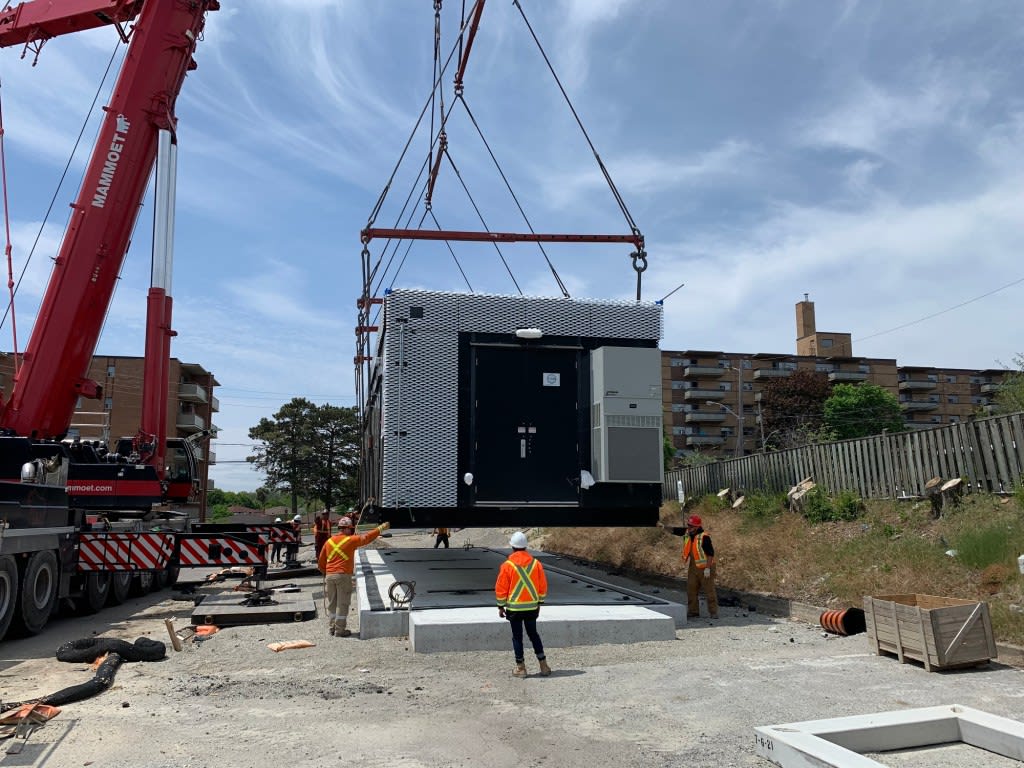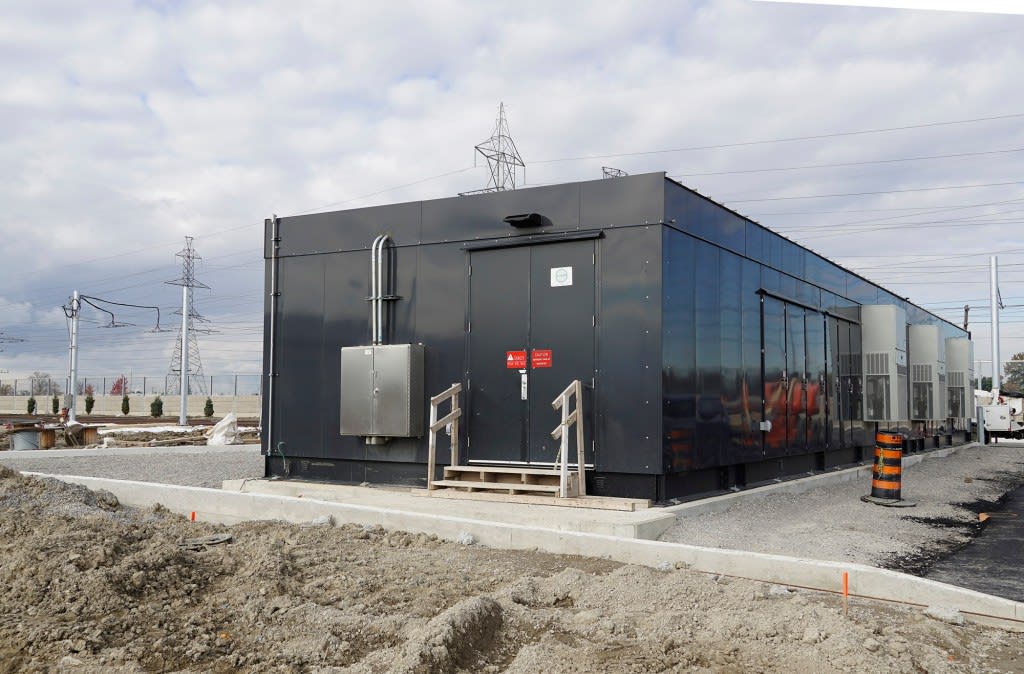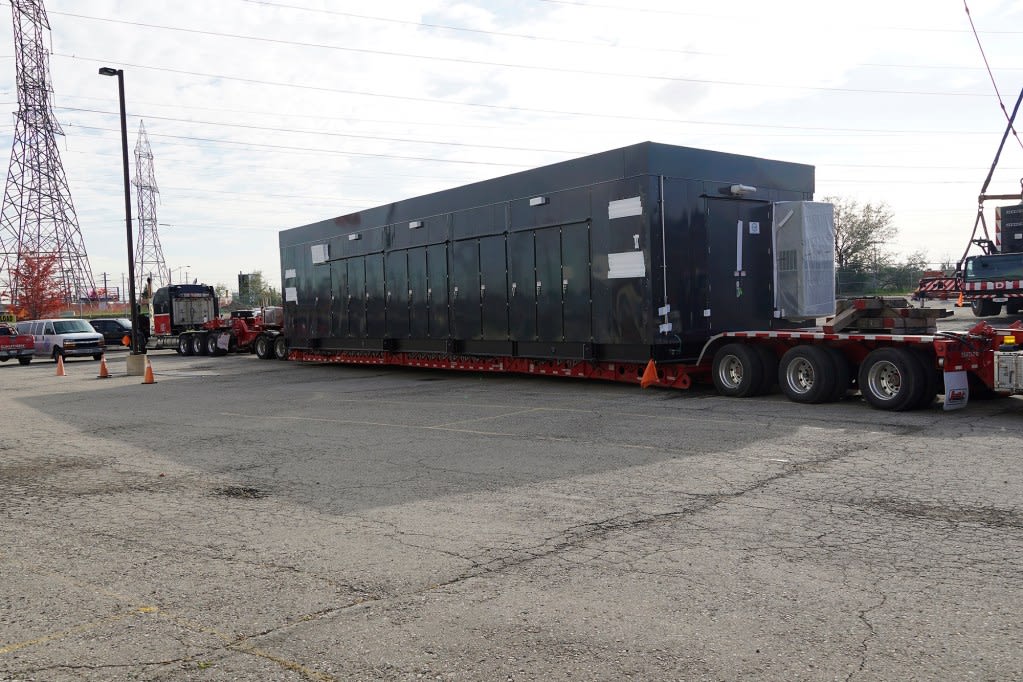Traction power – Taming 27,000 volts for the Finch West LRT
Eight out of nine traction power substations are now installed for the Finch West LRT.
Jul 7, 2022
At various locations along the side of Finch Avenue West, you can find a traction power substation (TPSS) – a small, prefabricated building that serves a vital role for the Finch West light rail transit (LRT) project.
Although unassuming, 27,000 volts of electricity are coursing through each of these structures.
Their purpose is to convert this power into the 750-volt direct current that runs through the overhead wires and powers the line’s light rail vehicles.
A TPSS is lifted into place with a mobile crane. (Metrolinx photo)
A TPSS can run unattended, but occasionally, workers need to go inside for maintenance or monitoring work. However, operating in a confined space with a massive amount of electricity flowing through the walls is never simple.
Great power, great responsibility
When working with any source of electricity, the need for safety can never be understated.
In a confined chamber with industrial levels of power, precautions need to be stepped up even further.
A fully installed TPSS at the Finch West LRT Maintenance and Storage Facility. (Metrolinx photo)
The biggest concern inside a TPSS is an arc flash, an explosive release of energy resulting from an equipment malfunction. Arc flashes can momentarily reach over 19,000 degrees Celsius, nearly four times hotter than the surface of the sun.
While every quality control is taken to ensure an arc flash never happens, the sheer amount of electrical power involved means workers always put on specialized personal protective equipment (PPE) before entering a live TPSS.
A worker puts on the first of two layers of insulative gloves as part of their arc flash PPE. (Metrolinx photo)
Arc flash PPE weighs about 9 kilograms and includes an insulated full-body suit, gloves and a helmet. And even with this full ensemble, flame-resistant clothing must still be worn underneath for another layer of protection.
Suiting up takes each worker about 10 minutes, and the suit’s insulative properties can work against the wearer; workers can only use the suit for 30 minutes at a time due to the risk of overheating from stored body heat.
A worker inside a TPSS wearing full arc flash PPE. (Metrolinx photo)
A rare occurrence
Thankfully, specialists only need to wear this about once a year when they perform safety inspections or update breakers and other equipment.
Also, if an issue like an arc flash does occur inside a TPSS, its systems automatically shut down, giving teams an opportunity to isolate systems before making repairs and restoring power.
“Working with any amount of electricity can be dangerous,” said Edgar Zarate, systems commissioning coordinator with line constructor Mosaic Transit Group.
“But working on an LRT line is a whole different level, and we must ensure we are safe as we can be, because it only takes one mistake or stroke of bad luck for disaster to strike.”
A TPSS being delivered in the vicinity of Finch West Ave. and Signet Drive. (Metrolinx photo)
While TPSS structures are perfectly safe to live and work near, they harness potentially dangerous amounts of electricity inside.
Individuals who work in them, like Edgar, are trained professionals; members of the public should never attempt to enter or interact with a TPSS.
by Alex Iantorno Metrolinx communications Senior Advisor




